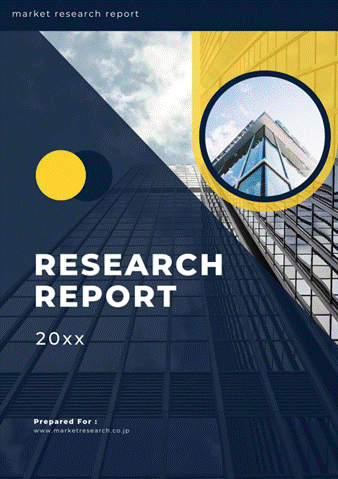 | • レポートコード:MRC2203A470 • 出版社/出版日:Mordor Intelligence / 2022年3月15日 • レポート形態:英文、PDF、128ページ • 納品方法:Eメール(受注後2-3営業日) • 産業分類:農業 |
| Single User | ¥703,000 (USD4,750) | ▷ お問い合わせ |
| Site Licence | ¥962,000 (USD6,500) | ▷ お問い合わせ |
| Corporate License | ¥1,295,000 (USD8,750) | ▷ お問い合わせ |
• お支払方法:銀行振込(納品後、ご請求書送付)
レポート概要
| Mordor Intelligence社は、世界の果物・野菜作物保護市場について調査・分析し、イントロダクション、調査手法、エグゼクティブサマリー、市場動向、性質別(合成、バイオベース)分析、種類別(除草剤、殺菌剤、殺虫剤、その他)分析、地域別(北米、ヨーロッパ、アジア太平洋、南米、アフリカ)分析、競争状況、市場機会・将来の傾向などの項目を掲載しています。 ・イントロダクション ・調査手法 ・エグゼクティブサマリー ・市場動向 ・世界の果物・野菜作物保護市場規模:性質別(合成、バイオベース) ・世界の果物・野菜作物保護市場規模:種類別(除草剤、殺菌剤、殺虫剤、その他) ・世界の果物・野菜作物保護市場規模:地域別(北米、ヨーロッパ、アジア太平洋、南米、アフリカ) ・競争状況(Bayer Cropscience AG、Syngenta International AG、Corteva Agriscience、...) ・市場機会・将来の傾向 |
The global crop protection market for fruit & vegetables is estimated to register a CAGR of 3.9% during the forecast period, 2020-2025. Growing population, declining arable land, food security, and the need for augmented agricultural productivity are the significant factors, which are driving the demand for higher agricultural output, thus augmenting the growth of the pesticide industry, globally. Increasing R&D cost, low per capita use of crop protection chemicals in several developing economies and ban in pesticides in certain regions are the major factors, which act as restraints to the market. The market is highly consolidated, with a few players dominating the market across different geographical regions. The market players are mostly focusing upon R&D, mergers, and acquisitions, and new product launches to increase their market share.
Key Market Trends
Growing Demand for Food Safety and Quality Driving the Market
Being essentially less toxic, when compared to regular synthetic crop protection chemicals, biopesticides typically affect only the target pest and other organisms that are closely related to it, as against broad-spectrum conventional pesticides, which can be harmful to other organisms. Greater investment in R&D is likely to be a key factor in the area, now that many major agrochemical companies have an interest in the sector. This factor, coupled with the aforementioned market opportunities, suggest that the biopesticides sector may perform better than the crop-protection sector.
Asia-Pacific dominates the Market
Fruits and vegetables are largely grown in India, China, and Japan, and it involves a very high usage rate of pesticides. Japan is a significant market for crop protection chemicals for fruits and vegetables, occupying a share of more than 15% of the total Asia-Pacific market in 2018. The country has the highest pesticide usage per hectare compared to any other country in the world at approximately 12 kg per hectare. In India, synthetic pesticides have been extensively used for alleviating the estimated 45% gross loss of crops, due to the infestation of pests and diseases. Major factors driving the Indian market include greater demand for food grains, limited availability of arable land, along with increasing exports, growth in horticulture and floriculture, and increasing public awareness regarding synthetic pesticides and biopesticides.
Competitive Landscape
The Fruit & Vegetable Crop Protection Market is highly consolidated, with a few players dominating the market across different geographical regions. A large number of merger and acquisitions is a key highlight of the competitive landscape in this market. Heavy investments in research and development are being made by the major players in this industry.
Additional Benefits:
- The market estimate (ME) sheet in Excel format
- 3 months of analyst support
1 INTRODUCTION
1.1 Study Assumptions
1.2 Scope of the Study
2 RESEARCH METHODOLOGY
3 EXECUTIVE SUMMARY
4 MARKET DYNAMICS
4.1 Market Overview
4.2 Market Drivers
4.3 Market Restraints
4.4 Porter’s Five Forces Analysis
4.4.1 Bargaining Power of Suppliers
4.4.2 Bargaining Power of Buyers
4.4.3 Threat of Substitute Products
4.4.4 Threat of New Entrants
4.4.5 Competitive Rivalry
5 MARKET SEGMENTATION
5.1 Origin
5.1.1 Synthetic
5.1.2 Bio-based
5.2 Type
5.2.1 Herbicides
5.2.2 Fungicides
5.2.3 Insecticides
5.2.4 Other Types
5.3 Geography
5.3.1 North America
5.3.1.1 United States
5.3.1.2 Canada
5.3.1.3 Mexico
5.3.1.4 Rest of North America
5.3.2 Europe
5.3.2.1 Germany
5.3.2.2 Spain
5.3.2.3 United Kingdom
5.3.2.4 France
5.3.2.5 Italy
5.3.2.6 Russia
5.3.2.7 Rest of Europe
5.3.3 Asia-Pacific
5.3.3.1 China
5.3.3.2 India
5.3.3.3 Australia
5.3.3.4 Japan
5.3.3.5 Rest of Asia-Pacific
5.3.4 South America
5.3.4.1 Brazil
5.3.4.2 Argentina
5.3.4.3 Rest of South America
5.3.5 Africa
5.3.5.1 South Africa
5.3.5.2 Rest of Africa
6 COMPETITIVE LANDSCAPE
6.1 Most Adopted Strategies
6.2 Market Share Analysis
6.3 Company Profiles
6.3.1 Bayer Cropscience AG
6.3.2 Syngenta International AG
6.3.3 Corteva Agriscience
6.3.4 BASF SE
6.3.5 UPL Limted
6.3.6 Adama Agricultural Solutions
6.3.7 AMVAC Chemical Corporation
6.3.8 Certis LLC
6.3.9 FMC Corporation
6.3.10 Isagro SpA
6.3.11 Koppert Biological Systems
6.3.12 Marrone Bio innovations
6.3.13 Nufarm Limited
7 MARKET OPPORTUNITIES AND FUTURE TRENDS